 |
Portrait identified as James Forten, oil on paper probably by the African American artist Robert Douglass, Jr., ca. 1834. Courtesy of the Historical Society of Pennsylvania.
The successful sail maker James Forten was in his time the richest African American in Philadelphia. He was one of a handful of rich black activists who financed schools and underwrote black organizations and antislavery efforts. His connections were far ranging, a friend of seaman Paul Cuffe, a supporter of New York activists and Freedom’s Journal, and a major influence on the thinking of young William Lloyd Garrison. |
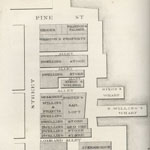
|
Map showing the site of James Forten’s sail loft on the Delaware River, in Abraham Ritter , Philadelphia and Her Merchants (Philadelphia, 1860). |
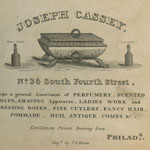 |
“Joseph Cassey. No. 36 South Fourth Street,” advertisement in United States Directory for the Use of Travellers and Merchants (Philadelphia, 1823).
Joseph Cassey was an emigrant from the French West Indies, established here as a barber by 1808. By the early 1820s his business expanded and he became a prosperous supporter of civic and antislavery activities. Like Forten and other blacks of some means, he expanded his wealth with real estate investments in the growing city. Cassey was an agent for The Liberator and a founding member of the Pennsylvania Anti-Slavery Society. A close friend of Forten, Cassey and other affluent blacks like Robert Douglass, Jacob White, and William Whipper, helped underwrite black civic and educational societies and the antislavery movement. |
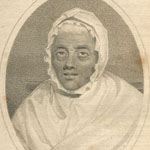
|
“Alice, Engraved from an Original sent from America,” in Eccentric Biography; or, Memoirs of Remarkable Female Characters, Ancient and Modern (London, 1803).
Alice, born here around 1686, was a working woman all her long life, manning a ferry on the Delaware near Bristol. She saw Philadelphia grow from wilderness to city and was familiar with William Penn, James Logan, and other major figures of early Philadelphia. She died in 1802, reportedly 116 years old. In her later years, historians and antiquarians interested in early Philadelphia tapped her sharp mind and memory for incidents and anecdotes ranging through the 18th century. |
 |
Robert Bogle. Died March 4, 1837. Aged 63. Ink and watercolor, possibly by Nicholas Biddle, undated but probably 1837. Courtesy of the Historical Society of Pennsylvania.
Robert Bogle, born a slave here in 1774, worked as a waiter and, after obtaining his freedom, became a successful cook. In the early 19th century he essentially invented catering, supplying food, drink, and services to meetings, weddings, and funerals. A man of style, taste, and ability, he was an indispensable fixture in Philadelphia high society, praised here in a poem by Nicholas Biddle. Catering provided an opportunity for several blacks to prosper, Bogle perhaps more than others. They were conscious of their position in society and organized themselves into the tight-knit Guild of Caterers. |
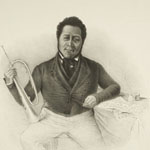
|
Frank Johnson. Lithograph by Alfred Hoffy, from a daguerreotype by Robert Douglass, Jr. (Philadelphia, 1846). Courtesy of the Historical Society of Pennsylvania.
Composer, band leader, virtuoso musician, Francis Johnson was the first internationally successful “cross-over” artist, playing to white audiences throughout the country, young Victoria at her coronation, and a variety of black concerts and balls. He was active from around 1818 to his death in 1844. Though often associated with marching bands and cotillion parties, Johnson turned to European popular musical development and pioneered concerts of popular band music. He was an example to many black musicians, and following his death a black “Frank Johnson Band” could be found in cities and towns from New England to California.
This lithograph is from the daguerreotype by Robert Douglass, Jr., a prolific black Philadelphia artist and the first black photographer in the city. Though his output was considerable, very little of his work survives today: two known paintings, one lithograph, one daguerreotype, and a watercolor and an ink drawing in our collection. |
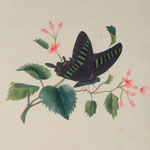 |
Sarah Mapps Douglass, A Token of Love from Me to Thee, watercolor in the personal album of Amy Matilda Cassey, ca. 1833.
The barber Robert Douglass was one of the affluent black Philadelphia activists, a friend and associate of James Forten, Joseph Cassey and others. Son Robert Jr., was a talented artist, and daughter Sarah became one of the most important educators in 19th-century Philadelphia, first with her own school in the 1820s and later at the prestigious Institute for Colored Youth. Like father and brother, she was an active abolitionist and a founder of the interracial Philadelphia Female Anti-Slavery Society. Her painting appears here in the personal album of Amy Matilda Cassey, daughter of the New York black leader Peter Williams, Jr., wife of Philadelphia’s Joseph Cassey, and Sarah’s colleague in the Philadelphia Female Anti-Slavery Society. |
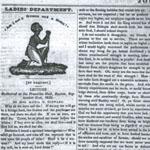 |
Maria W. Stewart, “Lecture Delivered at the Franklin Hall, Boston, September 21st, 1832,” in The Liberator, November 17, 1832.
Maria Stewart was strongly influenced by the fiery David Walker, who spoke to her own confrontations with white racism. In 1832 she became the first black woman, indeed the first American woman, to violate “the appropriate sphere of woman” and take to the public lecture platform. In her several addresses to Boston blacks, she urged blacks to gain education and to struggle for equal rights. Her four major addresses were published by William Lloyd Garrison in his newspaper, The Liberator, and in 1835 published together in Productions of Mrs. Maria W. Stewart. Stewart launched the women’s activism that flourished in the antislavery movement through the 1830s. Notice, for example, the article on the bottom of the second column, announcing the organization of the Female Anti-Slavery Society of Salem by “females of color.” |
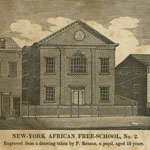 |
Patrick Henry Reason, “New-York African Free-School, No. 2,” in Charles C. Anderson, History of the African Free Schools of New York (New York, 1829). Courtesy of Historical Society of Pennsylvania. |
 |
Patrick Henry Reason, “The Truth Shall Make You Free,” engraved frontispiece to The Liberty Bell. By the Friends of Freedom (Boston, 1839). |
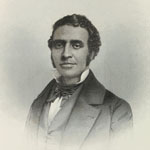 |
“Charles L. Reason,” portrait in Julia Griffiths, Autographs for Freedom (Auburn & Rochester, 1854).
Charles and Patrick Reason were both graduates of New York’s African Free School system, where Patrick’s artistic talent and Charles’s mathematical abilities were cultivated. Patrick would become one of the only commercially active black engravers, whose work included several portraits of blacks. Charles would become the first black college professor, at Central College in McGrawville, New York. He later taught in Philadelphia and in the public schools of New York. |
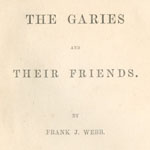 |
Frank Webb, Jr., The Garies and Their Friends (London, 1857).
Frank Webb was one of the founders of St. Thomas Church and active in the Augustinian Society. His son would become the second African American novelist, after William Wells Brown’s 1853 novel Clotelle; or, The President’s Daughter, also published in London. Webb’s novel is the first set in a northern free black community, Philadelphia of the 1840s and ‘50s. |
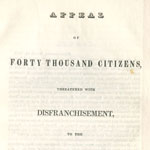 |
Robert Purvis, Appeal of Forty Thousand Citizens, Threatened with Disfranchisement, to the People of Pennsylvania (Philadelphia, 1838).
Born in Charleston, South Carolina, to a wealthy white father and a light-skinned mother, Robert Purvis could have easily passed for white. He did the exact opposite. He was educated at a private school here and soon became a militant abolitionist and a champion of black rights. In this pamphlet Purvis forcefully argues against the disfranchisement of Pennsylvania blacks proposed in the revised state Constitution of 1838. Blacks would lose the right to vote when the new Constitution, limiting voting rights to adult white men, was ratified. Purvis married Harriet Forten, one of Robert Forten’s daughters, linking the founding generation to the successor. He was a founding member of the American Anti-Slavery Society in 1833 and organizer of the Vigilance Committee, the Underground Railroad network in Philadelphia. In addition to his militant abolitionism, he was also an ardent supporter of women’s rights. |